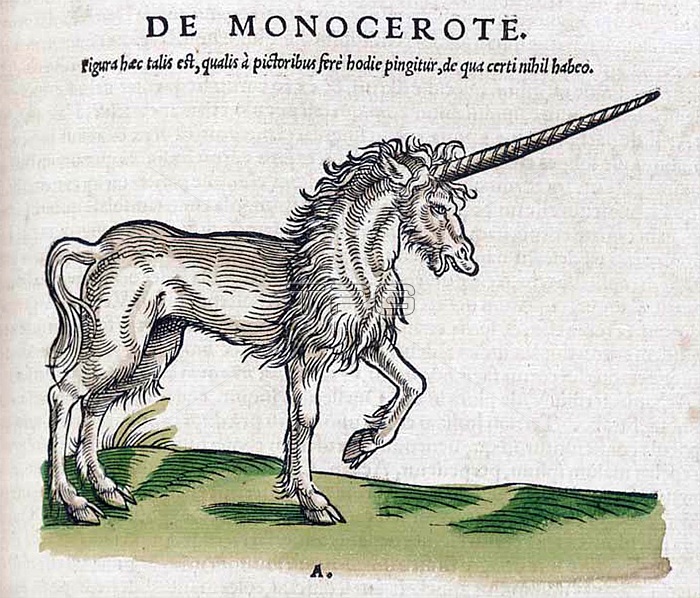
Illustration is from the 1551 book 'Historiae Animalium' by the Swiss naturalist and bibliographer Konrad Gesner. First mentioned by the ancient Greeks, it became the most important imaginary animal of the Middle Ages and Renaissance when it was commonly described as an extremely wild woodland creature, a symbol of purity and grace, which could only be seen and/or captured by a virgin. It has been described in European folklore as resembling a white horse with a large, pointed, spiraling horn projecting from its forehead, and sometimes a goat's beard and cloven hooves. At at other times described as resembling a small horse but with a long, straight horn growing out of its forehead having the legs of a deer and the tail of a lion. In alchemy the unicorn represented the Moon. Many believed that a unicorn's horn had the ability to neutralize poisons. Accounts of unicorns and their magical properties are found in literature, art, and legend.
| px | px | dpi | = | cm | x | cm | = | MB |
Details
Creative#:
TOP22154999
Source:
達志影像
Authorization Type:
RM
Release Information:
須由TPG 完整授權
Model Release:
N/A
Property Release:
No
Right to Privacy:
No
Same folder images:

 Loading
Loading